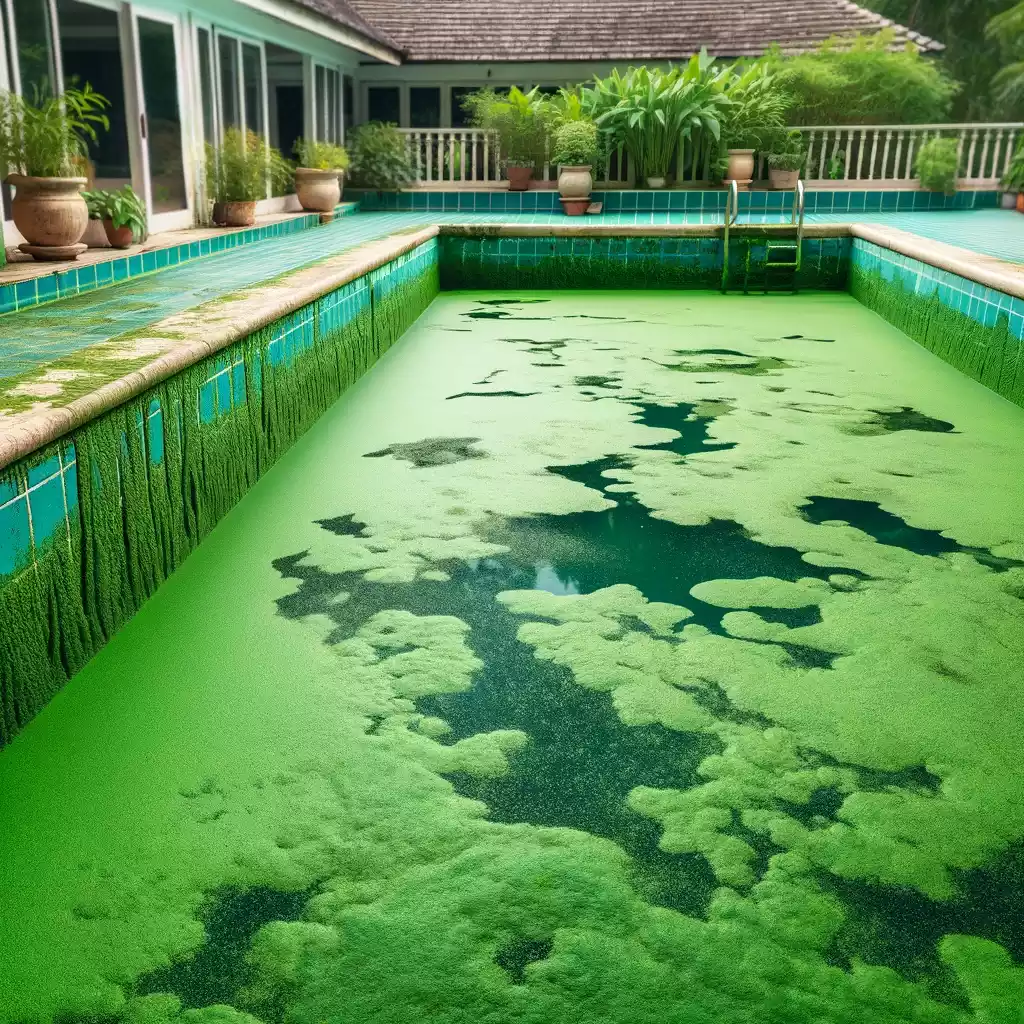Moss, also known as green algae, is a common issue in swimming pools. When algae growth occurs in a swimming pool, it indicates a deficiency in disinfection and sterilization efforts or problems in the disinfection process. Merely eliminating algae in such situations is a temporary solution; the real remedy lies in establishing the correct water quality management principles.
Why does moss appear in swimming pools?
- Sunlight and Photosynthesis: Algae require sunlight for photosynthesis, and swimming pools are typically exposed to direct sunlight, providing favorable conditions for algae growth.
- Water, Carbon Dioxide, Oxygen: These are fundamental elements for algae respiration and photosynthesis, and swimming pool water usually contains an ample supply of these elements.
- Nutrients such as Nitrogen, Phosphorus, Potassium, Zinc: In addition to basic elements, algae need certain nutrients for growth. The pool water’s nitrogen, phosphorus, potassium, zinc, and other elements create a nutrient-rich environment, promoting algae reproduction.
- Source of Organic Nitrogen Fertilizer: Sweat, oils, and skin metabolic products from swimmers serve as an organic nitrogen fertilizer for algae. These organic substances provide additional nutrients, accelerating algae growth.
Under suitable conditions, algae growth in swimming pools is inevitable. However, effective prevention and resolution of moss issues can be achieved through proactive use of disinfectants and remedial algae-eliminating agents. Under proper disinfection conditions, algae spores can be destroyed or inhibited, ensuring the pool water remains clear and meets hygiene standards.

Methods for eliminating algae are diverse. Below are detailed descriptions of various approaches
Removal
a. Manual brushing followed by filtration to remove algae from pool water. Professional brushes are used to thoroughly clean algae from pool walls and floor. Subsequently, the filtration system removes algae particles, ensuring clear water.
b. Use of chemical agents like polymers (e.g., polyaluminum chloride) to precipitate algae at the pool bottom. Then, a vacuum is employed to suction out the settled algae, thoroughly cleaning the pool.
Application of Copper Sulfate
Copper sulfate is an effective algaecide for swimming pool water, preventing and eliminating the growth of various algae, including green algae, black algae, and moss. After applying copper sulfate, its components inhibit algae reproduction, maintaining clear water.
This method is a convenient and rapid solution to address algae-related problems and keep the pool water fresh and transparent. When using copper sulfate algaecide, follow the instructions to ensure safety and effectiveness.
Dosage of Copper Sulfate algaecide
- Characteristics:
- Color: Copper sulfate algaecide is typically blue, aiding in monitoring its distribution in the water.
- Odor: Copper sulfate algaecide has a slight odor, but it is not strong.
- Usage:
- Typical Dosage: 2-3 kilograms of copper sulfate for every 1000 cubic meters of water. This ratio is based on the water volume to ensure sufficient distribution of copper sulfate throughout the water body.
- Frequency: It is not advisable to apply copper sulfate too frequently. Generally, a monthly application is sufficient to maintain an appropriate amount of copper sulfate in the water, preventing potential issues from excessive use.
- Operational Recommendations:
- Before applying copper sulfate algaecide, carefully read the product instructions to understand its properties, usage, and safety precautions.
- Ensure even distribution of copper sulfate during application to ensure complete dissolution in the water.
- Avoid excessive application to prevent unnecessary impacts on the water body.
In addressing moss issues in swimming pools, it is crucial to focus on prevention at the source by ensuring the perfection of disinfection and sterilization efforts. Additionally, it is essential to establish the correct water quality management principles, regularly monitor water quality, and adopt effective preventive measures to ensure the swimming pool remains clear and healthy. Through proper management and maintenance, we can keep moss problems at bay, making the swimming pool an ideal place for relaxation and enjoyment.
 Instant
Quote
Instant
Quote Email
Us
Email
Us